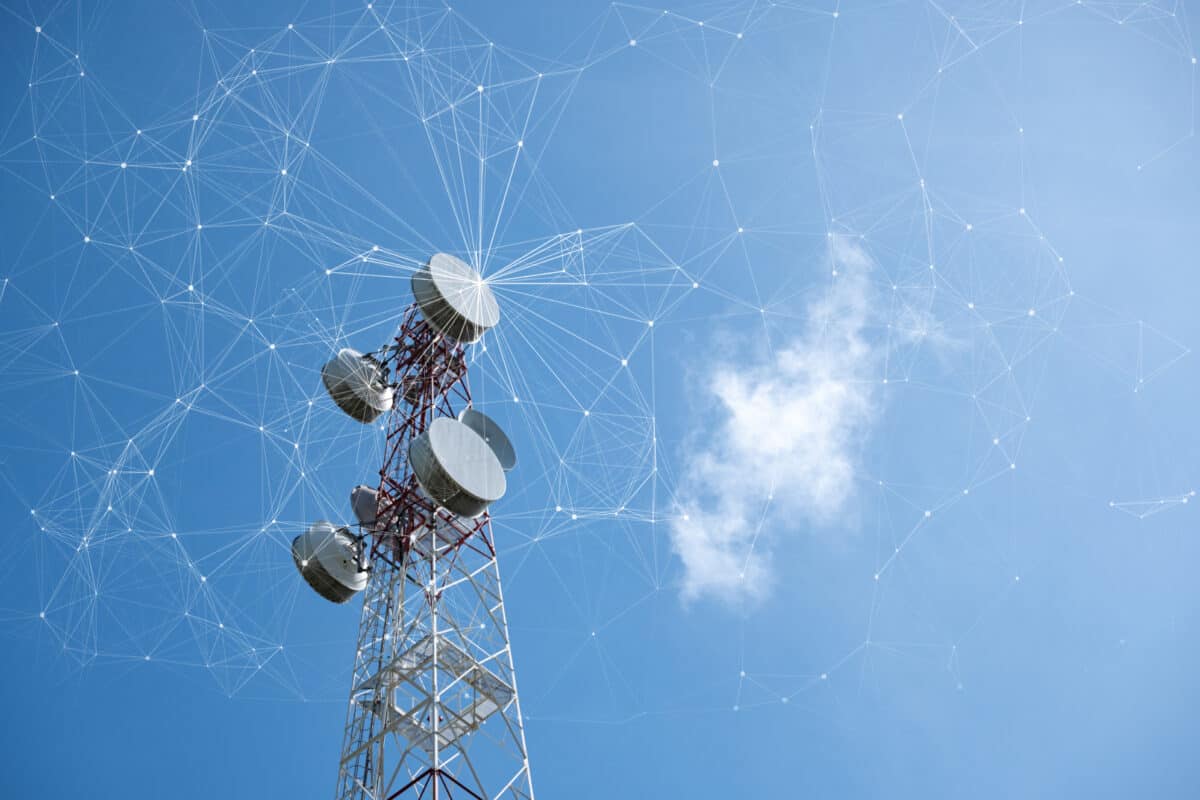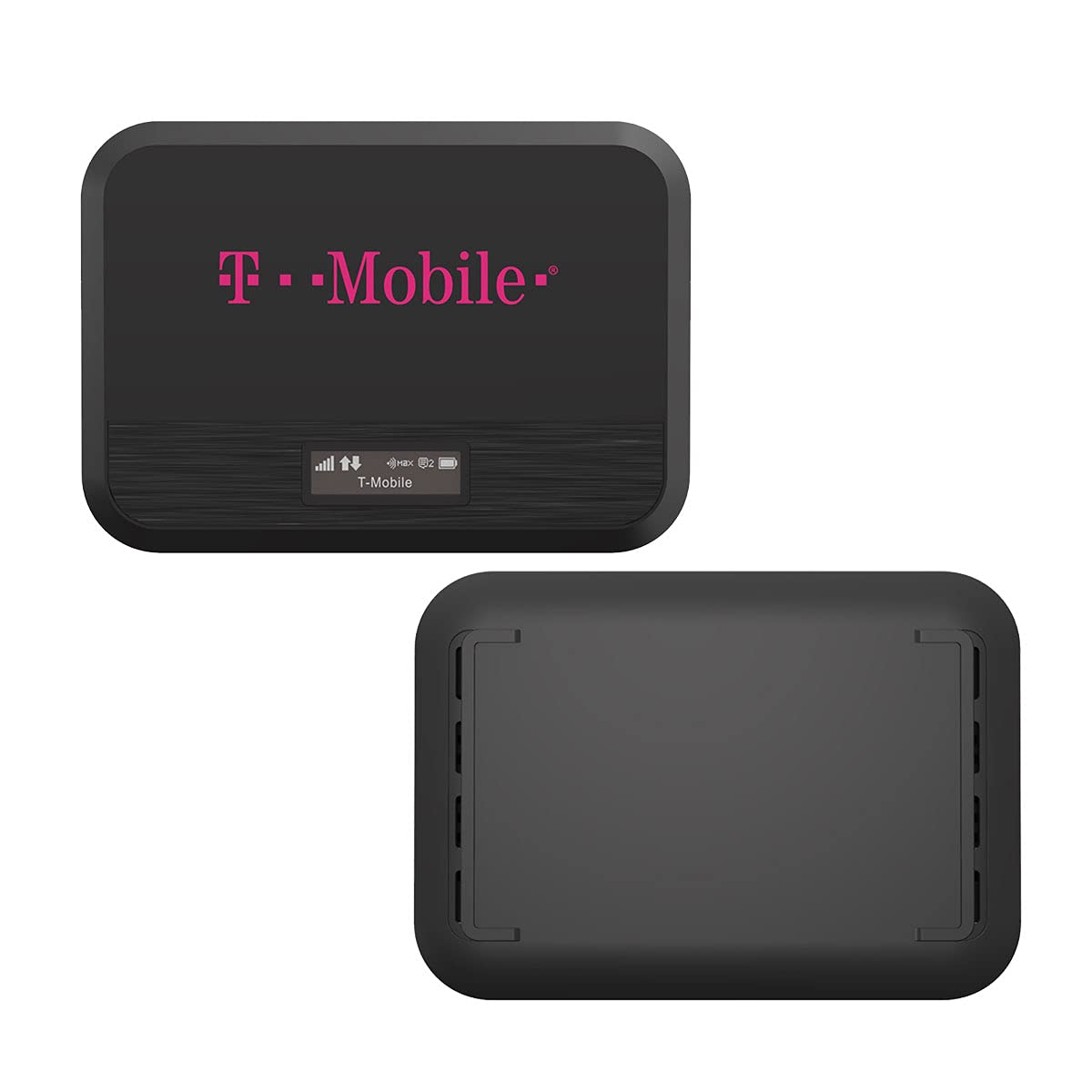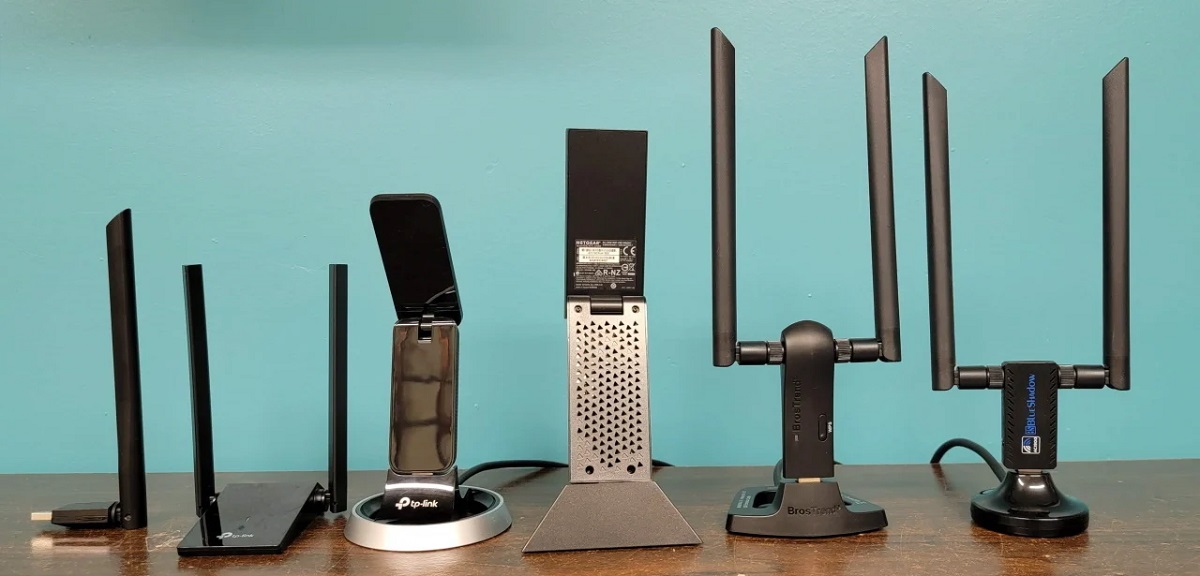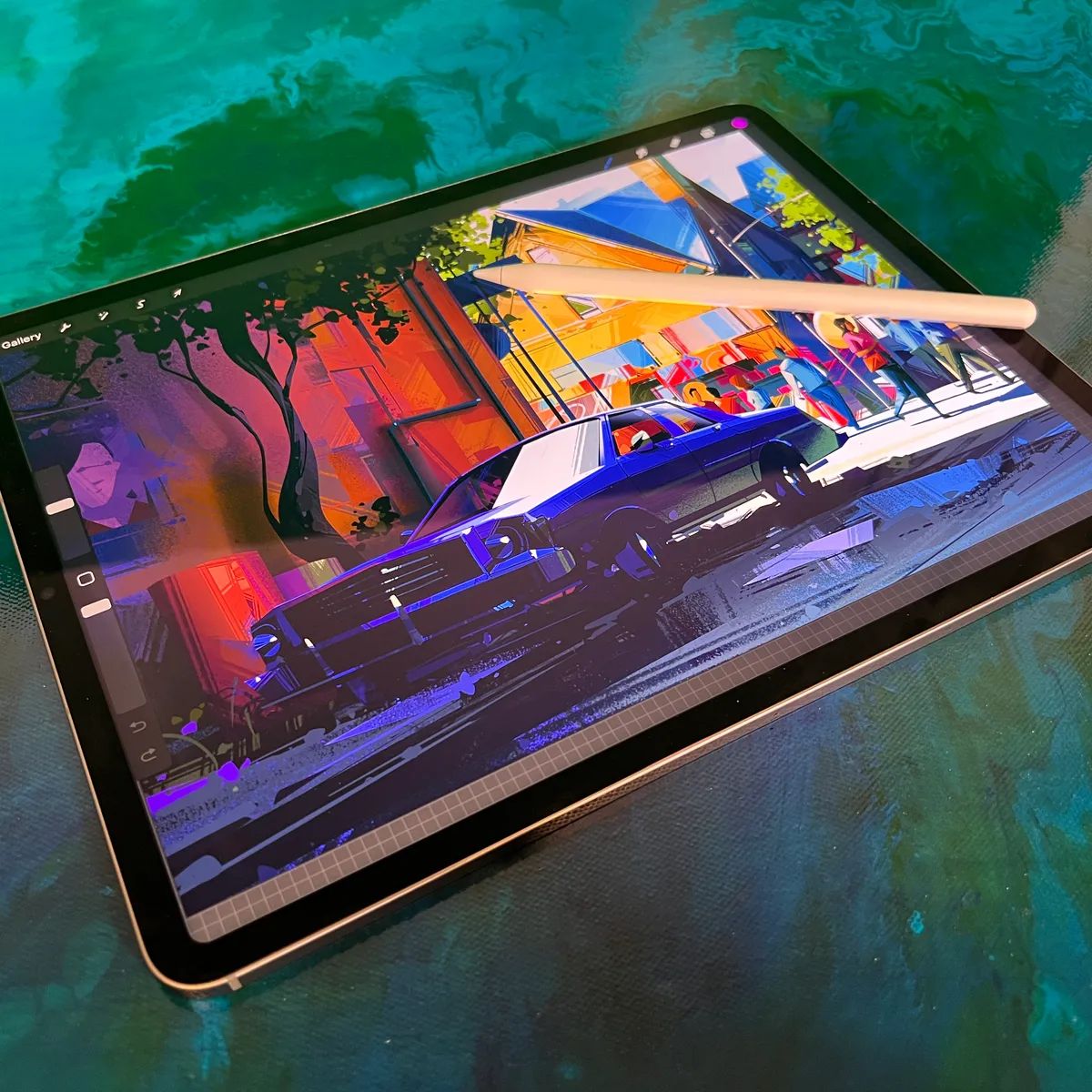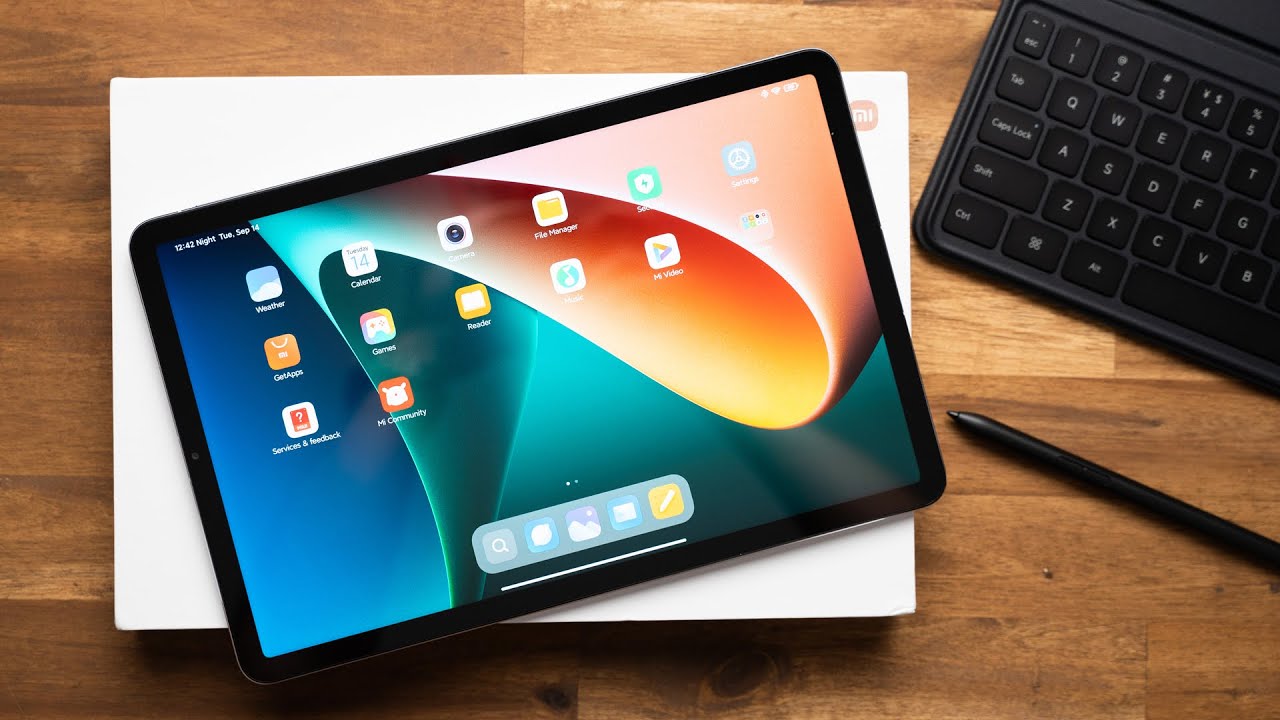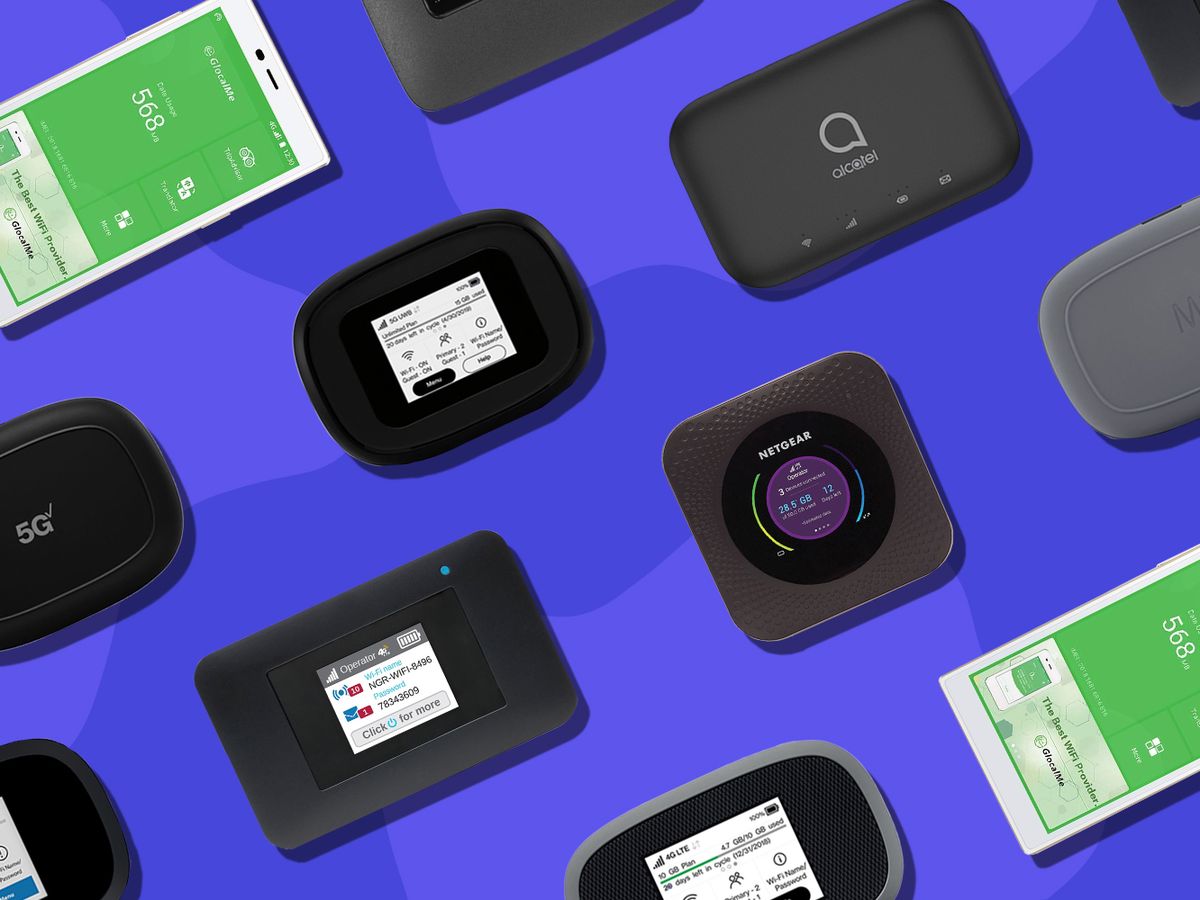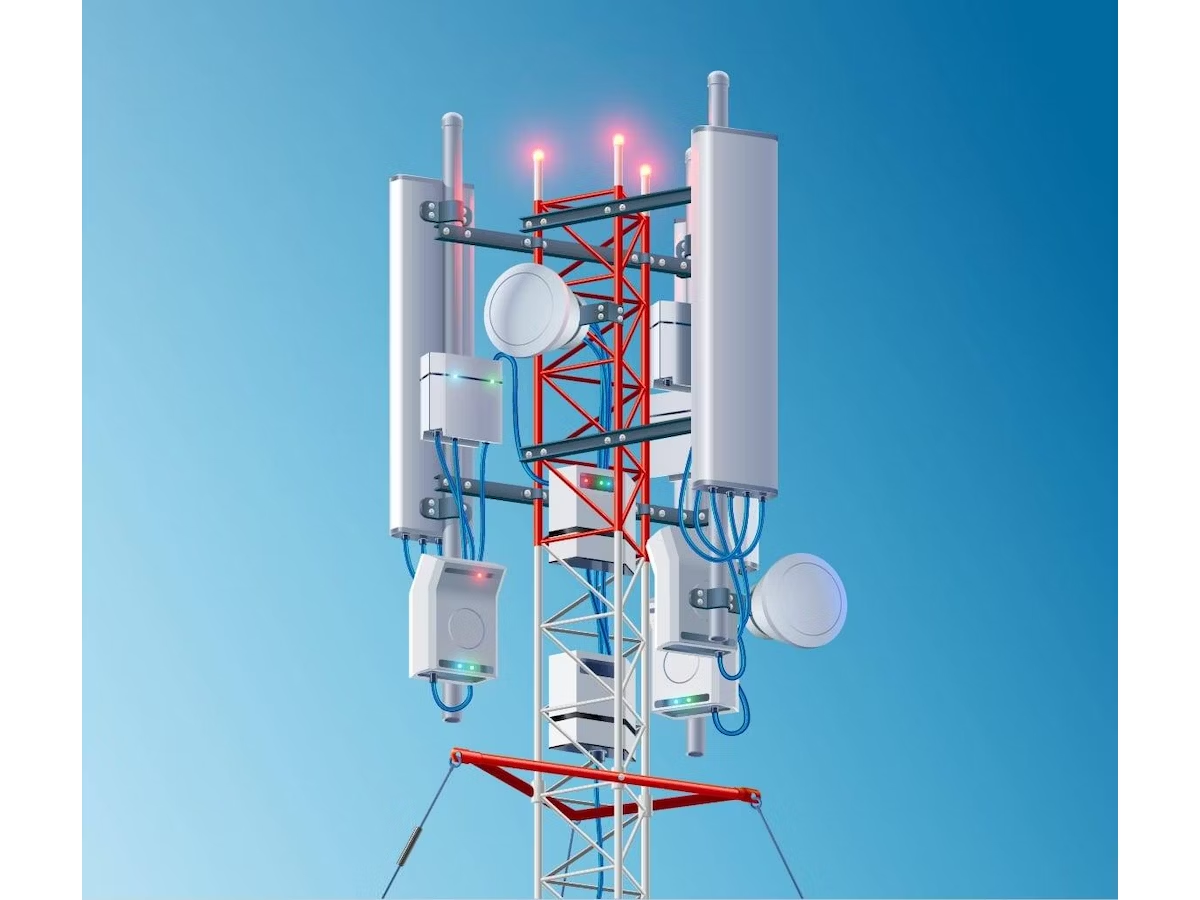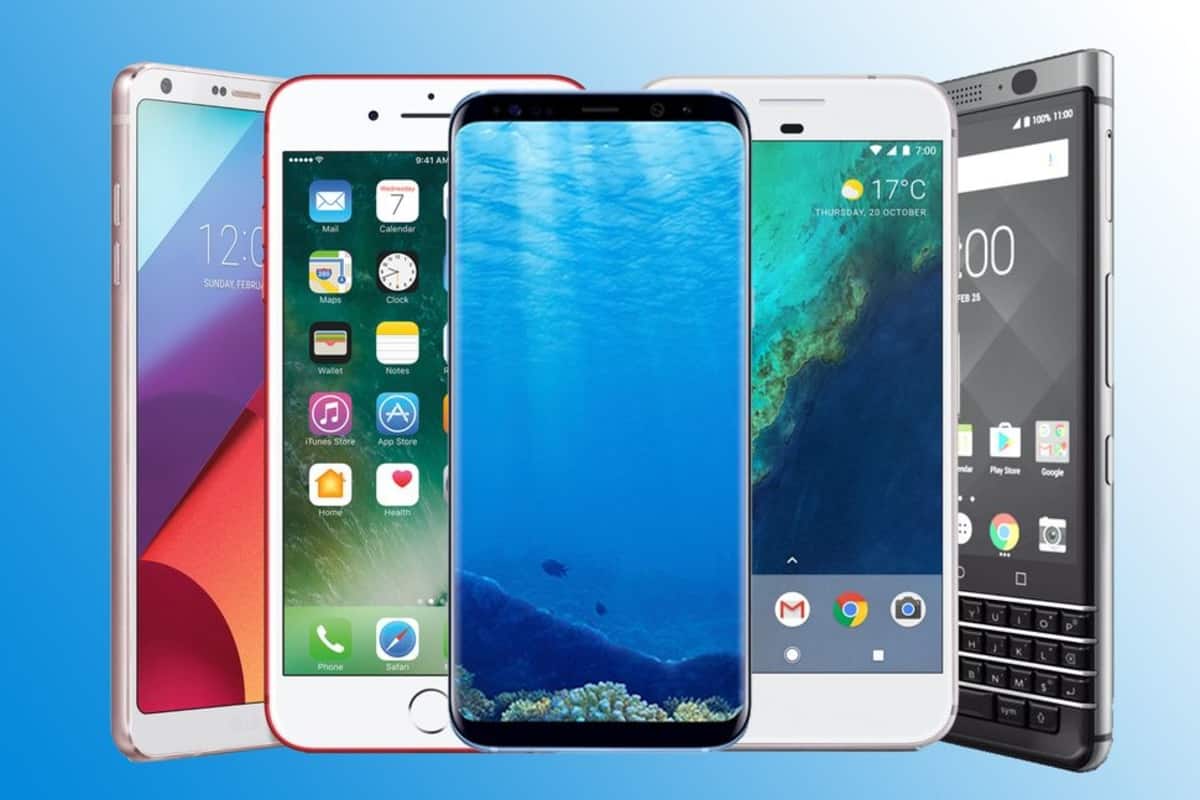Introduction
The demand for faster and more reliable mobile connectivity has been on the rise, driven by our increasing dependence on smartphones and other mobile devices. As technology continues to evolve, so do our expectations for seamless internet access on the go. It is this need for speed and convenience that led to the development and adoption of 4G technology in the United States.
4G, which stands for “fourth generation,” is the fourth iteration of mobile network technology. Its introduction marked a significant leap forward in terms of speed, capacity, and overall performance compared to its predecessors. With the advent of 4G, users could experience faster internet browsing, smoother video streaming, and enhanced performance for various mobile applications.
The emergence of 4G technology revolutionized the mobile telecommunications industry, paving the way for a new era of connectivity. The transition to 4G networks brought about a host of benefits for both consumers and businesses, creating opportunities for innovation and growth in various sectors.
In this article, we will delve into the history of 4G technology in the United States, exploring its initial introduction, the challenges faced, and the subsequent evolution of standards and technologies. We will also discuss the major carriers’ rollouts of 4G networks, as well as the advantages and benefits that 4G technology brings to users.
It is important to understand the significance of 4G technology and how it has transformed the way we connect and communicate through mobile devices. So, let’s embark on this journey to discover the timeline of 4G technology in the United States and appreciate the milestones that have shaped our current mobile landscape.
The Need for Faster Mobile Connectivity
As our dependence on mobile devices continues to grow, so does our demand for faster and more reliable mobile connectivity. Gone are the days when a simple phone call or text message sufficed. We now rely on our smartphones for a multitude of tasks, from browsing the web and streaming videos to accessing social media and conducting business on the go.
The rise of smartphones and mobile applications has created a voracious appetite for data. We expect instant access to information, seamless video streaming, and uninterrupted connectivity no matter where we are. Slow loading times, buffering videos, and dropped connections have become a frustration that we are no longer willing to tolerate.
This need for speed and convenience has fueled the demand for faster mobile networks. We want our devices to be always connected, delivering a smooth and reliable internet experience. Whether it’s downloading large files, participating in video conferences, or enjoying immersive online gaming, we want it all and we want it now.
This demand is not only driven by individual consumers but also by businesses that are increasingly reliant on mobile technologies. From remote workers and field technicians to sales representatives and logistics personnel, the ability to access critical information and collaborate in real-time is essential for productivity and success.
Furthermore, the Internet of Things (IoT) has emerged as a major trend, connecting various devices and appliances to the internet. From smart homes and wearable devices to connected cars and industrial machinery, the number of connected devices continues to grow. All of these devices require fast and reliable connectivity to function optimally.
In summary, the need for faster mobile connectivity has become undeniable. Our reliance on smartphones, the demand for data-intensive applications, and the growth of IoT have all contributed to this increasing need. 4G technology was developed to address these demands and provide users with the fast and reliable connectivity they crave. In the following sections, we will explore the emergence of 4G technology in the United States and its impact on our mobile experience.
The Emergence of 4G Technology
The emergence of 4G technology marked a turning point in the mobile telecommunications industry. It offered significant advancements in terms of speed, capacity, and overall performance compared to its predecessors. But how did this technology come to be?
The journey towards 4G began with the International Telecommunication Union (ITU), a specialized agency of the United Nations responsible for coordinating and standardizing global telecommunications. In 2008, the ITU defined the requirements for a true 4G network, which included a minimum peak data rate, improved spectral efficiency, and enhanced connectivity.
Various telecommunications companies and organizations competed to develop the technology that would meet these requirements. Two leading contenders emerged: Long Term Evolution (LTE) and WiMAX. LTE, backed by the 3rd Generation Partnership Project (3GPP), and WiMAX, supported by the Institute of Electrical and Electronics Engineers (IEEE), were both vying to become the dominant 4G technology.
Ultimately, LTE emerged as the frontrunner, with major industry players endorsing and adopting the technology. LTE offered several advantages, including backward compatibility with existing 3G networks, efficient use of the radio spectrum, and the ability to support high-speed data transfer. These factors played a crucial role in driving the widespread adoption of LTE as the de facto 4G standard.
The emergence of LTE brought about a significant shift in mobile networks. With theoretical download speeds of up to 100 megabits per second (Mbps), LTE provided users with a much faster and more reliable internet experience on their mobile devices. This breakthrough in connectivity paved the way for a wide range of applications and services that were previously not feasible or practical.
It’s important to note that while LTE is often referred to as 4G, it technically falls under the category of “pre-4G” technologies. True 4G, as defined by the ITU, requires even higher speeds and specifications that LTE Advanced and subsequent technologies fulfill. However, LTE is widely recognized and marketed as 4G due to its significant advancements over previous generations.
In the next section, we will explore the first implementation of 4G technology in the United States and the challenges that were encountered during its initial rollout.
The First 4G Network in the US
The first implementation of 4G technology in the United States was a major milestone in the evolution of mobile networks. It brought faster internet speeds and improved connectivity to users, revolutionizing the way we interacted with our mobile devices.
Sprint Nextel Corporation was the first major US carrier to launch a 4G network. In December 2008, Sprint rolled out its 4G services, leveraging WiMAX technology. Known as Sprint 4G WiMAX, this network offered users faster internet speeds and a more robust wireless experience.
WiMAX, which stands for Worldwide Interoperability for Microwave Access, was a wireless broadband technology that provided high-speed internet access over a wide area. Sprint’s decision to adopt WiMAX as its 4G technology of choice was strategic, as it allowed them to get a head start in the race to deliver faster connectivity to consumers.
The launch of Sprint’s 4G network was met with significant excitement and anticipation from users eager to experience the benefits of this next-generation connectivity. The faster download and upload speeds offered by WiMAX enabled users to stream high-definition videos, download large files, and engage in real-time online activities with ease.
Despite being the first to introduce 4G in the United States, Sprint’s WiMAX-based network faced challenges and limitations. One of the primary drawbacks was its limited coverage area. In the early stages, Sprint’s 4G network was only available in select cities, leaving many users outside those regions without access to the promised high-speed connectivity.
Another obstacle was the lack of compatibility with other carriers’ networks. While Sprint customers enjoyed the benefits of 4G within the Sprint network, they were unable to roam onto other carriers’ networks that used different technologies. This limited the overall reach and impact of Sprint’s 4G network and created a fragmented user experience.
Recognizing the need to expand coverage and address compatibility issues, other major US carriers began exploring alternative 4G technologies. This paved the way for the eventual dominance of LTE as the standard 4G technology in the United States.
In the following sections, we will delve into the evolving standards and technologies that led to LTE becoming the prevailing 4G network across major US carriers, bringing with it greater coverage, compatibility, and improved mobile experiences for users nationwide.
Initial Dilemmas and Challenges
The initial rollout of 4G networks in the United States posed several dilemmas and challenges for both carriers and consumers. While the promise of faster and more reliable connectivity was enticing, there were obstacles that needed to be overcome to ensure a successful transition to this next-generation technology.
One of the primary challenges was the need for widespread infrastructure upgrades. Implementing 4G technology required carriers to invest in new equipment, including base stations and antennas, to support the increased data capacity and coverage demands. This substantial investment was necessary to provide users with the seamless, high-speed connectivity they expected.
Additionally, there were compatibility issues between different carriers and their chosen 4G technologies. While Sprint initially rolled out a WiMAX-based network, other carriers like Verizon and AT&T opted for LTE. This incompatibility meant that users on different carriers couldn’t enjoy the benefits of 4G when roaming outside their network’s coverage area, leading to fragmented experiences for consumers.
Another challenge was ensuring broad and consistent coverage. 4G networks initially faced limitations in terms of geographic reach, with coverage concentrated in metropolitan areas. This left users in rural or remote locations without access to the promised high-speed connectivity, exacerbating the digital divide between urban and rural communities.
Moreover, the transition to 4G required users to upgrade their devices to ones compatible with the new technology. Early 4G adopters had to invest in new smartphones, tablets, or mobile hotspots capable of accessing the 4G networks. This presented a dilemma for consumers who were content with their current devices or hesitant to invest in new hardware.
Despite these challenges, the adoption of 4G technology steadily increased as carriers overcame infrastructure hurdles, expanded coverage, and offered more compatible devices. The allure of faster internet speeds, improved browsing, and streaming experiences ultimately convinced many consumers to make the switch.
In the following sections, we will explore the evolving standards and technologies that helped address these initial dilemmas, paving the way for the widespread adoption and integration of 4G networks across the United States.
Evolving Standards and Technologies
As the demand for faster and more reliable mobile connectivity grew, so did the need for evolving standards and technologies to meet these demands. The initial rollout of 4G networks in the United States laid the foundation for future advancements and improvements in mobile communications.
One of the critical developments in the evolution of 4G technology was the shift towards LTE (Long Term Evolution) as the dominant standard. LTE offered significant advantages, including higher data speeds, improved spectral efficiency, and compatibility with existing 3G networks. This transition to LTE provided a more unified and standardized 4G experience for consumers across different carriers.
LTE also introduced the concept of network slicing, which allowed carriers to allocate specific portions of their network to different types of services or applications. This capability enabled carriers to prioritize certain traffic, leading to better network management and improved quality of service for users.
Subsequently, LTE-Advanced (LTE-A) was introduced, building upon the foundation of LTE. LTE-A featured enhancements such as carrier aggregation, which enabled the combination of multiple radio frequency bands to increase data speeds and overall capacity. This innovation resulted in a more efficient utilization of available spectrum and improved the performance of 4G networks.
Beyond LTE-A, the industry continues to push the boundaries with the development of 5G technology. 5G represents the next generation of mobile network technology, promising even faster speeds, lower latency, and the ability to connect a significantly larger number of devices simultaneously. 5G deployments are ongoing, and the technology is expected to coexist and complement existing 4G networks, offering users even more possibilities and opportunities.
In addition to these network advancements, devices also played a crucial role in the evolution of 4G technology. Manufacturers introduced smartphones, tablets, and other mobile devices with built-in 4G capabilities, providing users with seamless access to high-speed connectivity. This shift eliminated the need for external modems or dongles and made 4G more accessible and convenient for consumers.
Overall, the evolving standards and technologies in the 4G realm have paved the way for faster and more reliable mobile connectivity. The transition from initial 4G implementations to LTE and LTE-A, as well as ongoing developments in 5G, demonstrates a commitment to continuously improving the mobile experience and meeting the ever-growing demands of users.
In the next section, we will explore the major US carriers’ rollouts of 4G networks and the impact they have had on the overall mobile landscape in the United States.
Major US Carriers’ 4G Rollouts
The rollout of 4G networks in the United States was not limited to a single carrier. Multiple major carriers made significant strides in deploying their own 4G networks, each bringing their unique offerings and coverage to users across the country.
Verizon Wireless, one of the largest carriers in the United States, launched its 4G LTE network in December 2010. Verizon’s extensive coverage and commitment to LTE helped solidify the technology’s prominence. The carrier’s expansive network allowed users to experience faster download and upload speeds, enabling activities such as high-definition video streaming, online gaming, and seamless web browsing.
AT&T also played a pivotal role in the adoption of 4G technology. The carrier initially offered HSPA+ as a transitional 4G technology before fully embracing LTE. AT&T’s LTE network, launched in September 2011, provided users with robust and reliable connectivity, enhancing their mobile experience across various devices and applications.
T-Mobile USA, now known as T-Mobile, was another major player in the 4G landscape. The carrier initially adopted HSPA+ technology but later transitioned to LTE. T-Mobile’s aggressive approach to network expansion and its “Un-carrier” initiatives challenged the status quo, offering users unlimited data plans and innovative services. The carrier’s 4G network provided competitive speeds and coverage that attracted a loyal customer base.
Sprint, as mentioned earlier, was the first major carrier to launch a 4G network in the United States with its WiMAX-based offering. However, due to limited coverage and the industry’s shift toward LTE, Sprint made the decision to sunset its WiMAX network and transition to LTE. Sprint’s LTE network rollout began in 2012, allowing the carrier to offer faster and more consistent 4G connectivity to its customers.
These major carriers’ 4G rollouts have significantly transformed the mobile landscape in the United States. The availability of 4G networks nationwide has laid the foundation for the widespread adoption of mobile applications, the rise of mobile commerce, and the proliferation of connected devices.
It is important to note that the competition among these carriers, coupled with ongoing advancements in 4G technology, has resulted in continuous network expansion and performance improvements. Users now have access to faster and more reliable connections, regardless of their location within the United States.
In the next section, we will explore the benefits and advantages that 4G technology brings to users, enhancing their mobile experience and enabling a wide range of activities and applications.
Benefits and Advantages of 4G
4G technology offers numerous benefits and advantages that have transformed the way we use our mobile devices and access the internet. From faster speeds to improved connectivity, 4G has significantly enhanced the mobile experience for users across the United States.
One of the primary advantages of 4G is its speed. Compared to previous generations of mobile networks, 4G offers significantly faster download and upload speeds, allowing users to access and share data at unprecedented rates. This speed is particularly noticeable when streaming high-definition videos, downloading large files, or participating in real-time video conferencing.
The low latency of 4G networks also contributes to a smoother browsing and streaming experience. Latency refers to the delay in data transfer between devices and networks. With 4G, users experience reduced latency, resulting in minimal lag when performing online activities such as playing online games or conducting video calls.
Moreover, 4G networks provide a more stable and reliable connection, with improved coverage compared to previous generations. This means that users can enjoy seamless connectivity while on the move, even in areas with a weaker signal. The broader coverage of 4G networks has bridged gaps in connectivity, allowing users in both urban and rural areas to experience high-speed internet access.
The increased capacity of 4G networks also supports the growing demand for data-intensive applications. Whether it’s streaming high-definition videos or using resource-demanding mobile applications, 4G networks can handle the data requirements, ensuring a smooth and uninterrupted experience for users.
Moreover, 4G technology has opened up new possibilities and opportunities in various sectors. From e-commerce and mobile banking to telemedicine and remote work, the fast and reliable connectivity of 4G networks has enabled the emergence of innovative applications and services. Businesses and individuals can now access critical information, collaborate in real-time, and stay connected with ease, regardless of their location.
Furthermore, the widespread availability of 4G has accelerated the adoption of IoT (Internet of Things) devices. The ability to connect various smart devices and appliances to the internet has created a more integrated and interconnected environment. With 4G, users can control their smart homes, monitor health and fitness devices, and manage other IoT-enabled devices seamlessly.
In summary, 4G technology has revolutionized the mobile experience, providing users with faster speeds, improved connectivity, and expanded possibilities. The numerous benefits and advantages of 4G networks have transformed the way we access information, connect with others, and engage with our mobile devices.
Comparison with Previous Mobile Generations
When comparing 4G with previous mobile generations, namely 3G and 2G, several significant advancements become apparent. These advancements have transformed the way we use our mobile devices and access the internet.
First and foremost, the speed and capacity of 4G networks surpass that of its predecessors. 3G networks offered faster data speeds compared to the initial 2G networks, enabling basic web browsing and email access on mobile devices. However, 4G took data speeds to a whole new level, allowing for seamless streaming of high-definition videos, real-time online gaming, and faster file downloads.
Additionally, 4G networks have significantly lower latency compared to 3G and 2G networks. This reduction in latency translates to minimal delays when performing online activities, making real-time applications such as video conferencing and online gaming much more enjoyable and efficient.
Another notable difference lies in the overall capacity of 4G networks. While 3G networks provided a decent level of capacity, 4G networks offer a much higher capacity to handle the increasing demand for data. This has resulted in improved network performance and a smoother user experience, even in areas with high user density.
Coverage is yet another aspect where 4G networks have surpassed previous generations. While 3G networks expanded coverage compared to 2G, 4G networks have further extended coverage, including both urban and rural areas. This has bridged the connectivity gap, allowing users in remote regions to enjoy the same high-speed internet access as their urban counterparts.
The availability of advanced technologies, such as LTE and LTE-A, in 4G networks has also contributed to significant improvements. These technologies allow for more efficient use of the available spectrum, resulting in better network performance and a higher number of concurrent connections.
Moreover, 4G networks have played a crucial role in enabling the rise of the Internet of Things (IoT). The increased speed and capacity of 4G networks have facilitated the seamless connection of numerous IoT devices, allowing users to control their smart homes, monitor health devices, and manage other connected devices with ease.
In summary, 4G networks have brought major advancements in terms of speed, latency, capacity, and coverage compared to previous mobile generations. The ability to enjoy faster download and upload speeds, lower latency, and wider coverage has transformed the way we interact with our mobile devices and access the internet. As we move towards the deployment of 5G networks, we can anticipate even more groundbreaking changes that will further enhance our mobile experience.
Conclusion
The emergence and widespread adoption of 4G technology in the United States have revolutionized the way we connect, communicate, and engage with our mobile devices. The transition from previous mobile generations to 4G has brought forth numerous benefits and advancements, paving the way for faster speeds, improved coverage, and enhanced user experiences.
With 4G, users can now enjoy faster download and upload speeds, allowing for seamless streaming of high-definition videos, real-time gaming, and faster file transfers. The low latency of 4G networks has reduced delays, enabling real-time interactive applications and a smoother browsing experience.
The increased capacity and coverage of 4G networks have bridge the digital divide, providing users in both urban and rural areas with access to reliable and high-speed internet connectivity. This has opened up new possibilities for businesses, individuals, and IoT devices, revolutionizing sectors such as e-commerce, telemedicine, and smart home automation.
The evolution of 4G networks has not been without its challenges. Early rollout dilemmas, infrastructure upgrades, and compatibility issues presented obstacles that had to be overcome. However, carriers’ commitment to expanding coverage, evolving standards, and ongoing technological advancements have addressed these challenges, resulting in a more seamless and unified 4G experience for users.
As we embrace the benefits of 4G technology, we can look forward to further advancements in the form of 5G networks. 5G promises even faster speeds, lower latency, and the ability to support a massive number of connected devices simultaneously. This next-generation technology will usher in a new era of connectivity and innovation, further transforming the way we live, work, and communicate.
In conclusion, 4G technology has provided us with faster speeds, improved connectivity, and a world of possibilities in the palm of our hands. Its impact on the mobile landscape in the United States has been significant, and as we eagerly await the widespread adoption of 5G, the future of mobile connectivity looks brighter than ever.







